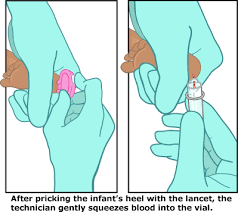Which of the following tests has a fasting requirement?
BUN
HDL
ABG
CBC
The Correct Answer is B
Choice A reason:
The BUN test measures the amount of urea nitrogen in the blood, which can indicate kidney function. Fasting is not typically required for a BUN test unless it is being conducted alongside other tests that may require fasting.
Choice B reason:
An HDL test is part of a lipid profile that measures the levels of good cholesterol in the blood. Fasting before a cholesterol test, including HDL, is often recommended to ensure accuracy, although recent guidelines have changed, allowing for nonfasting cholesterol testing in certain individuals.
Choice C reason:
An ABG test measures oxygen and carbon dioxide levels in the blood and assesses the body's acid-base balance. Preparation for an ABG test does not typically require fasting, but patients may need to stop supplemental oxygen before the test to get accurate measurements.
Choice D reason:
A CBC test, or complete blood count, does not require fasting. It measures various factors of the blood, including red and white blood cells and platelets. Fasting is not necessary unless the CBC is part of a panel of tests that includes tests requiring fasting.
Nursing Test Bank
Naxlex Comprehensive Predictor Exams
Related Questions
Correct Answer is B
Explanation
Choice A reason:
Performing a heel stick on a 5-year-old patient is not an appropriate technique. Heel sticks are typically used for infants, particularly newborns, to minimize discomfort and because their finger pads may not be fully developed for finger sticks. By the age of 5, a child's veins are usually developed enough for venipuncture, which is the preferred method.
Choice B reason:
Performing a finger stick on a toddler patient is an appropriate technique for specimen collection. This method is commonly used for children who are not yet old enough for venipuncture but have outgrown the heel stick method. The finger stick is performed on the palmar surface of the distal phalanx, usually of the middle or ring finger, and is considered safe and effective for collecting small blood samples in toddlers.
Choice C reason:
Performing a thumb stick on an infant is not an appropriate technique. The thumb has a pulse and is more sensitive, which can cause unnecessary pain and distress to the infant. Additionally, the thumb's size and increased movement make it a less suitable site for specimen collection in infants.
Choice D reason:
Performing a thumb stick on a 5-year-old patient is also not an appropriate technique. As with infants, the thumb's sensitivity and the presence of a pulse make it a less desirable site for blood collection. For a 5-year-old, venipuncture or a finger stick on a non-thumb finger would be more appropriate and less distressing.

Correct Answer is B
Explanation
Choice A Reason:
Submitting laboratory results to the representative for workers' compensation is generally not a violation of patient privacy. This action is often necessary as part of the claims process and is typically done with the patient's consent or as mandated by law.
Choice B Reason:
Discussing laboratory results with a patient's partner without the patient's explicit consent is a violation of patient privacy. Confidentiality is a fundamental principle in healthcare, and disclosing health information to unauthorized individuals, including family members, breaches that confidentiality.
Choice C Reason:
Providing diagnosis codes to a patient's insurance company is a standard procedure and is not considered a violation of patient privacy. This information is necessary for the insurance company to process claims and provide coverage for medical services.
Choice D Reason:
Printing a patient's full name on the specimen label is standard practice and does not violate patient privacy. This is done to ensure that the specimen is correctly identified and matched to the patient, which is critical for accurate diagnosis and treatment.
Whether you are a student looking to ace your exams or a practicing nurse seeking to enhance your expertise , our nursing education contents will empower you with the confidence and competence to make a difference in the lives of patients and become a respected leader in the healthcare field.
Visit Naxlex, invest in your future and unlock endless possibilities with our unparalleled nursing education contents today
Report Wrong Answer on the Current Question
Do you disagree with the answer? If yes, what is your expected answer? Explain.
Kindly be descriptive with the issue you are facing.
